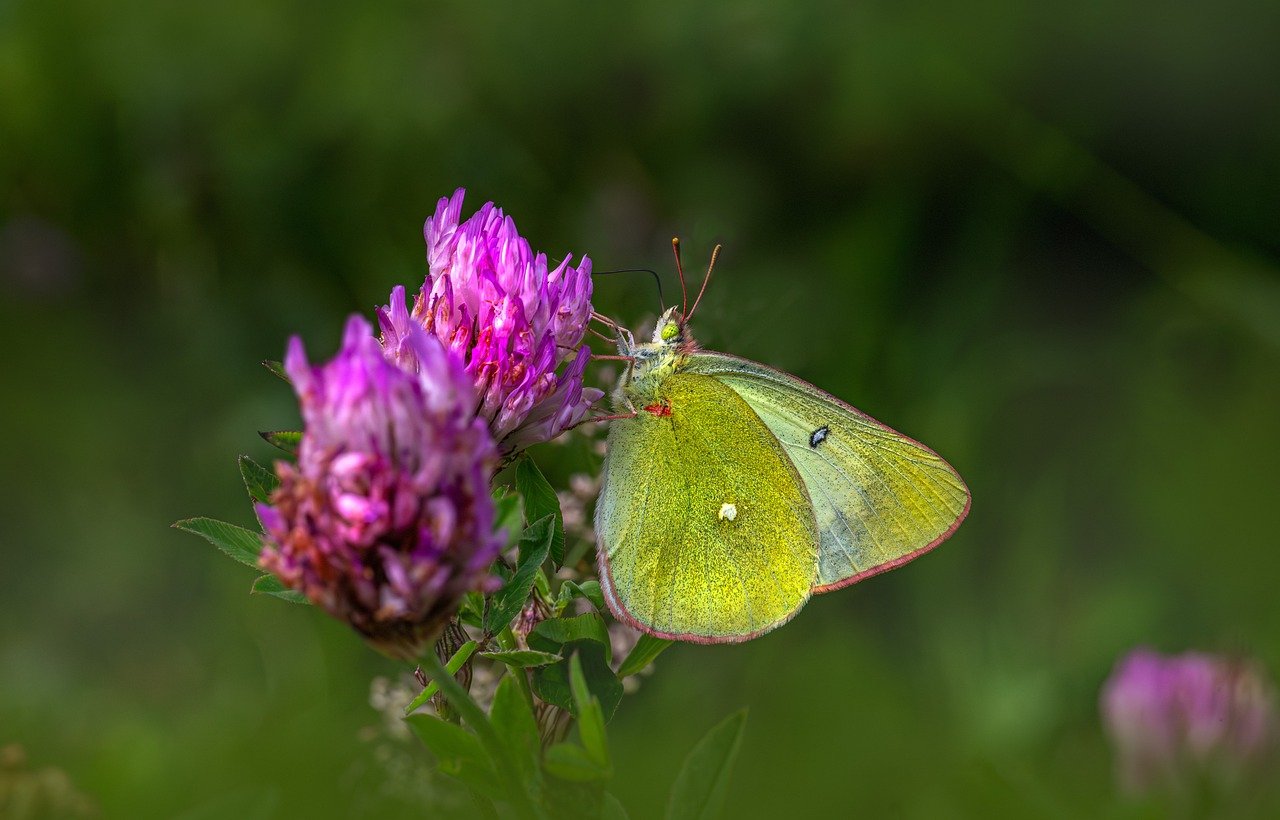The Pale Clouded Yellow (Colias hyale) is a species of butterfly belonging to the family Pieridae. It is known for its distinctive yellow coloration and is commonly found in Europe and parts of Asia. Here is an overview of the Pale Clouded Yellow:
Appearance
Adult Butterfly:
- Wingspan: The wingspan ranges from 46 to 54 millimeters.
- Coloration: The upper side of the wings is pale yellow with a dark border. The forewings have a dark spot near the center. The hindwings often have a series of small dark spots along the edges.
- Sexual Dimorphism: Males and females are similar in appearance, but females can sometimes have more pronounced dark borders.
Underside of Wings:
- Coloration: The underside of the wings is a lighter yellow with faint markings, providing camouflage when the butterfly is at rest.
Habitat
- Preferred Habitats: The Pale Clouded Yellow prefers open areas such as meadows, grasslands, fields, and road verges. They are often found in regions with an abundance of wildflowers.
- Geographic Range: This species is widely distributed across Europe, extending into parts of Asia and occasionally found in North Africa.
Life Cycle
Eggs:
- Laying: Females lay eggs singly on the leaves of host plants.
- Host Plants: Common host plants include species of clover (Trifolium), lucerne (Medicago sativa), and other legumes.
Larvae (Caterpillars):
- Appearance: Caterpillars are green with a white or yellow lateral stripe and covered in fine hairs.
- Feeding: They feed on the leaves of their host plants.
Pupae (Chrysalis):
- Appearance: The chrysalis is green or brown, matching the surrounding vegetation.
- Development: The pupal stage lasts for a few weeks before emerging as an adult butterfly.
Behavior
- Flight Period: The Pale Clouded Yellow typically has two to three generations per year, with adults flying from late spring to autumn.
- Migration: Some populations are known to migrate, especially in warmer regions, moving to find suitable breeding grounds.
- Feeding: Adults feed on nectar from a variety of flowers, including thistles, clover, and knapweed.
Identification Tips
- Color and Markings: The pale yellow color with dark borders and central spots on the forewings are key identification features.
- Flight Pattern: They have a rapid and fluttery flight, often staying close to the ground.
- Comparison with Similar Species: The Pale Clouded Yellow can be distinguished from the similar Clouded Yellow (Colias croceus) by its paler color and more subdued markings.
Ecological Role
- Pollination: As nectar feeders, Pale Clouded Yellows play a role in the pollination of various wildflowers.
- Prey and Predator Dynamics: They serve as prey for birds, spiders, and other insect predators.
Conservation Status
- Population: The Pale Clouded Yellow is not currently considered endangered, with stable populations in many areas.
- Threats: Habitat loss due to agricultural practices and urban development can pose threats to local populations.
- Conservation Efforts: Preserving natural meadows and grasslands and promoting the growth of host plants can help support their populations.
Summary
The Pale Clouded Yellow (Colias hyale) is a widely distributed butterfly known for its pale yellow wings with dark borders. Found in meadows and grasslands across Europe and parts of Asia, it has a life cycle that includes laying eggs on leguminous host plants, green caterpillars, and a pupal stage. These butterflies are important pollinators and part of the food web in their habitats. While not currently endangered, conservation efforts focus on maintaining their natural habitats to ensure stable populations.
Views: 662
Subscribe to the newsletter:
